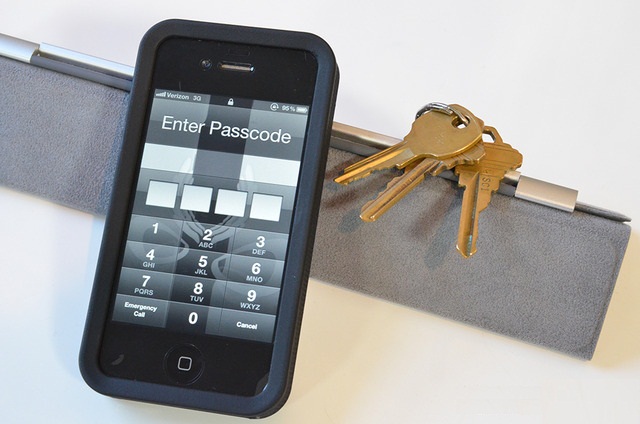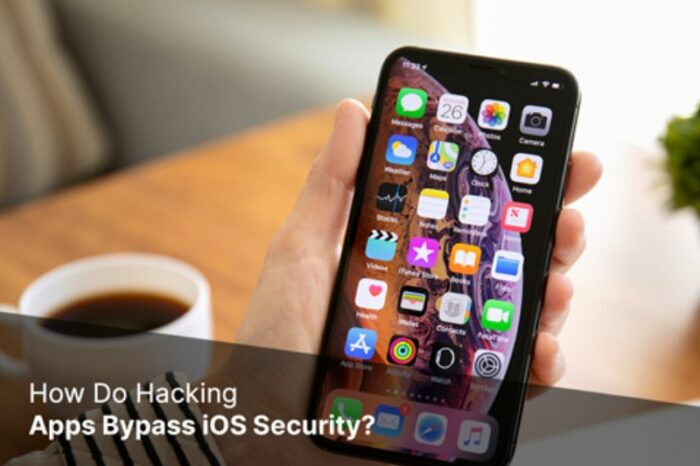Apple’s iOS operates via a system called the App Sandbox, which is one of the main reasons that Apple devices are highly secure from hacking apps. This sandbox environment enhances Apple’s iOS security as it prevents malicious code-like malware from spreading on its devices.
The sandbox environment also allows apps to run in a secured space where they’re unable to access each other’s data to do things such as transmit personal info or execute viruses onto Apple devices. But even after that, even iOS is not without its fair share of flaws. And there’s one particular flaw that allows spyware apps for iPhone to access Apple’s ecosystem.
Despite common belief, iPhones are vulnerable to hacking even when they are switched off, just like any other modern technology. When the owner of a device loses control of the data and allows unauthorized access to a third party, they become a victim of hacking. And the severity of the breach is determined by the hacker’s abilities and aims. If you’ve ever wondered how these hacking apps ios apps bypass iOS security, read on to find out.
The Problem With Apple’s Tight-knit Control
Apple’s tight-knit OS gets controlled by Apple itself, meaning that it controls the apps available on the App Store. It adds restrictions to the user experience, but this limitation results in stricter security right out of the box. For example, iOS only permits one copy of a program to be installed on each device.
So, if a user has a security-restricted copy of an app provided by the company, the user cannot also have an unrestricted version of the same program for personal use. iOS customization is also more limited, with everything from the phone’s appearance to app functionality having to adhere to Apple’s design guidelines.
iOS users will be limited to Apple-approved devices and apps, which is a good thing for security. With fewer touchpoints across the ecosystem, Apple can sustain each of its devices for a longer time than platforms with hardware-OS fragmentation. Because of Apple’s smaller platform, even older phones may be able to run the latest OS and apps.
It results in making use of all new security updates in the process. As a result, iPhone security has developed a “safer” reputation among users. Furthermore, the closed environment only allows programs that do not access the phone’s root coding, which eliminates the requirement for iOS antivirus and makes it hard to design an iOS antivirus for App Store approval.
While all algorithms in the iOS source code are managed by the authorized authority, i.e. Apple, they are not open to critique and further improvement. As a result, Apple’s cybersecurity seems to stagnate and not produce dynamic solutions. As a result, they may release a version containing a security flaw, which attackers may have exploited before detection.
One example is the iMessage zero-click attack, which was discovered on iOS versions before 14.8. Until Apple resolved the vulnerability in iOS 14.8, cybercriminals were able to install the Pegasus spyware on consumers’ smartphones. But it’s not only grand scale espionage apps like Pegasus that can infiltrate Apple’s so-called walled garden ecosystem. Many commercially sold monitoring apps can easily access Apple devices.

Spyware Apps Can Access Most iPhones
Spyware apps are generally used to measure employee productivity by ensuring that they do not waste work time on Facebook, surfing the Internet, writing long texts, or making unnecessary phone calls. Remote monitoring software also keeps enterprise data safe from prying eyes.
When these spyware apps for iPhone get used to protecting against cyberattacks, their usefulness shines through. Such apps can prevent malware from spreading across entire networks as the data they extract from iPhones gets sent to a control panel where it gets analyzed for text strings that contain malicious executable code.
How do Spyware Apps Infiltrate Apple’s Ecosystem?
Xnspy is one of the spyware apps for iPhone that incorporates this cell phone surveillance software technology. It bypasses iOS security by utilizing the iCloud backup vulnerability. It gets loaded on iPhones via iCloud because Apple flags them as safe and believes they are part of the user’s backup data. And to bypass instant messaging apps’ end-to-end encryption, Xnspy remotely activates the iPhone’s screen recording function.
Xnspy takes screenshots whenever the device owner opens any instant messaging apps. All the screenshots get uploaded to the XNSPY server, where IT teams can analyze them for malicious code. You can find more details on this page on how iMessage monitoring, location tracking, and surround recording are possible on iPhones using Xnspy surveillance software for iOS devices: https://xnspy.com/iphone-spy.html
Users need to install Xnspy on the device they want to protect, log in to their dashboard account, and navigate to the menu to access the features they want to use. For example, most malware attacks occur via emails, so a company’s IT team can use Xnspy’s email log scanner to filter out malicious content.
This app proves beneficial as most harmful emails have gotten so advanced that they pass through email providers’ default spam filters. The email scanner feature also comes in handy since the IT team can open the emails on larger screens to closely analyze spelling mistakes and sender names.
Did You Know? Phishing attacks are harder to spot on smartphones because of their small screens. Ransomware can similarly spread through fake adverts or giveaways sent from unknown numbers through text messages. Both texts and emails get monitored by navigating to the Xnspy’s Phone Logs tab from the dashboard.
Users can safeguard themselves from spam messages received on instant messaging apps too. Xnspy Screen Record and Messenger logs features can be used to isolate themselves from the messages received on apps like WhatsApp, Instagram, and Messenger.

Does Apple Have a Way Out?
Apple has slowed its progress by making the iPhone ecosystem immune to exploring and personalization. But users cannot place sole responsibility on Apple’s shoulders. Most cell phone surveillance software and spyware apps for iPhone don’t break into the phone’s operating systems but use a backdoor from the iCloud account or permission abuse access by Jailbreaking the iPhone.
As a result, it is an excellent time to be security savvy and protect your data by not relying on the tech giant’s security patches. Make sure your device has a strong password. Use uppercase, lowercase letters, numerals, and special characters in your passwords. Users should avoid choosing easy-to-guess names or terms.
When making online payments, use the official mobile banking app. It will aid in the protection of your credit card information when making transactions or accessing sensitive information on banking websites. Ensure that financial transactions get conducted over secure communication channels such as SSL-encrypted webpages and delete suspicious texts and emails.




Spyware apps are generally used to measure employee productivity and thus can access iPhones without disintegrating iOS operability.
The iMessage zero-click attack enabled cybercriminals to install the Pegasus spyware on consumers’ smartphones.
Apple’s cybersecurity seems to stagnate and not produce dynamic solutions because of the company’s tightknit control.
We cannot also have an unrestricted version of an app for personal use since Apple doesn’t allow a second copy of the same app.
That was informative
Apple’s tight-knit OS gets controlled by Apple itself, meaning that it controls the apps available on the App Store.
Despite common belief, iPhones are vulnerable to hacking even when they are switched off, just like any other modern technology.
Apple’s sandbox allows apps to run in a secured space where they’re unable to access each other’s data which makes the ecosystem more secure.
Good read